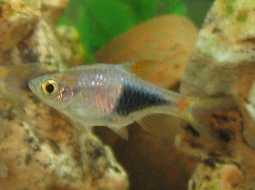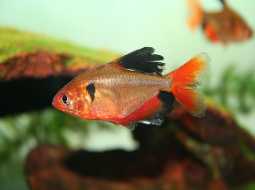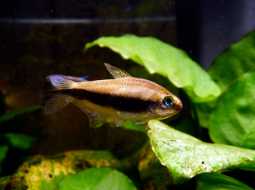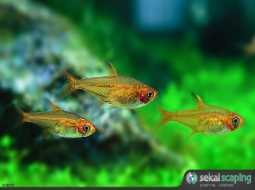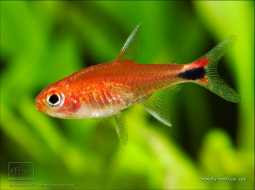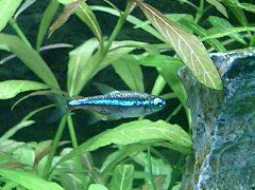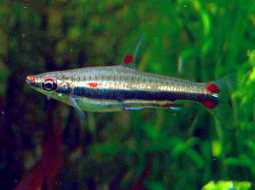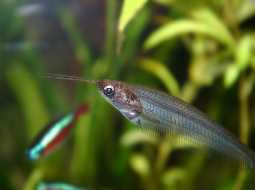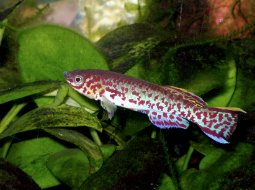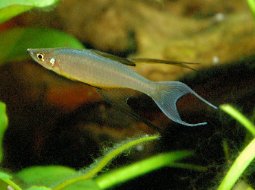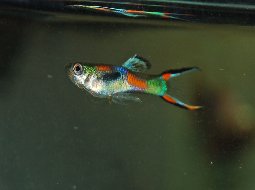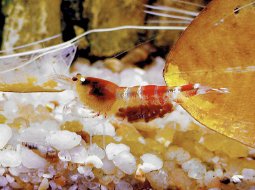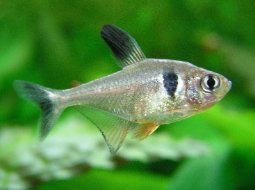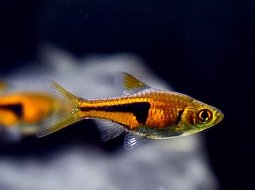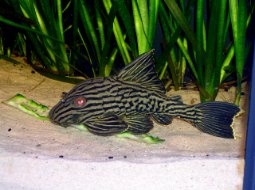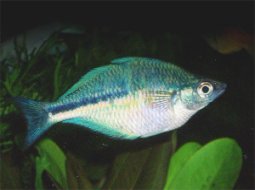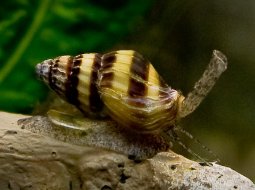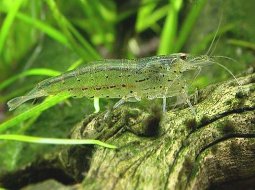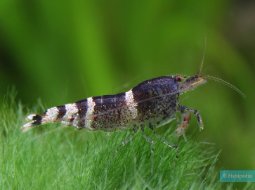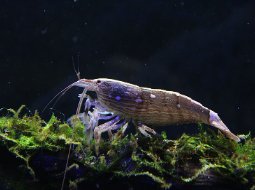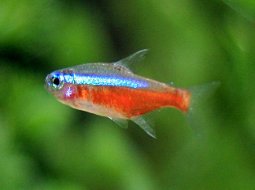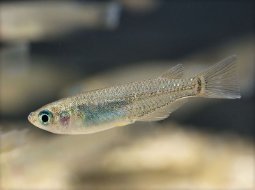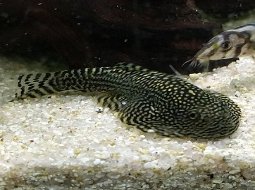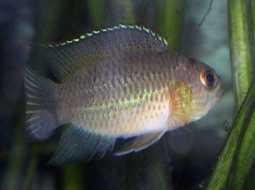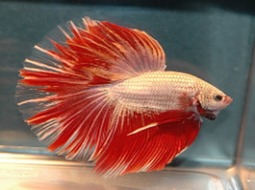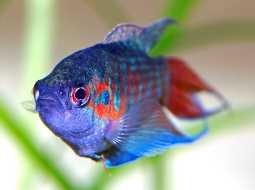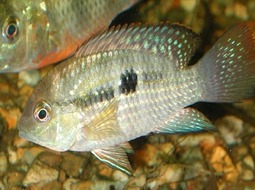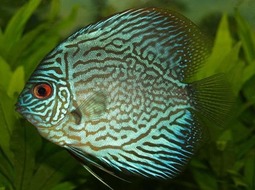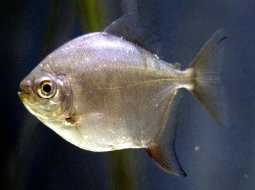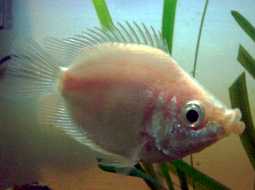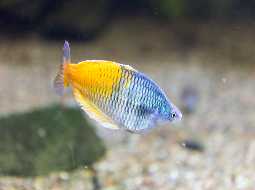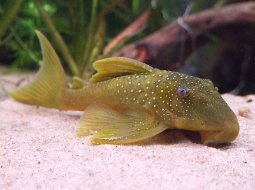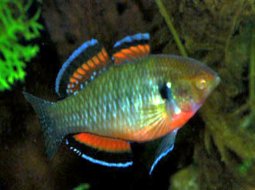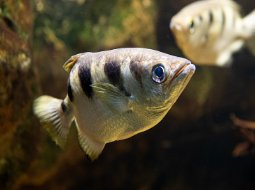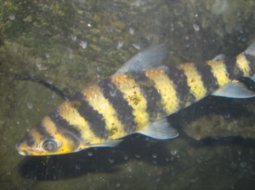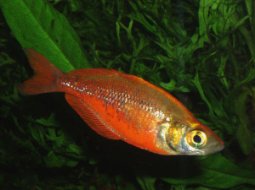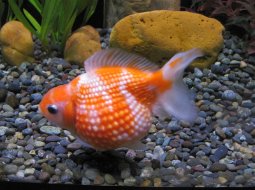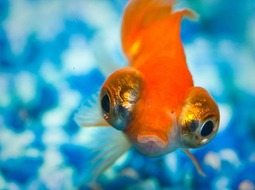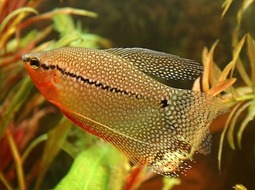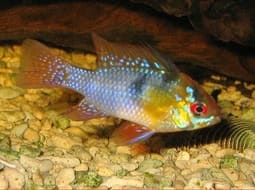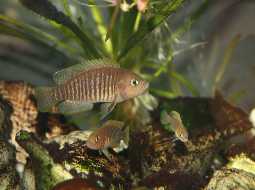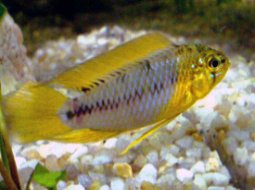
Loading Aqualapp ...
Care and Compatibility of Black Neon Tetra - Hyphessobrycon herbertaxelrodi
Introduction
The Black Neon Tetra, scientifically known as Hyphessobrycon herbertaxelrodi, is a variety of Neon Tetra with distinctive coloring. They have an elongated and laterally compressed body, with a black base color and a bright horizontal neon stripe running along their body. This feature gives them their common name, Black Neon Tetra. They are highly popular among aquarium enthusiasts due to their attractive appearance.
Behavior
The Black Neon Tetra is an active and social species that adapts well to community aquariums. They are schooling fish, and it is recommended to keep them in groups of at least six individuals to ensure they feel secure and exhibit their natural behavior. They enjoy swimming in open water and exploring their environment in search of food. They are peaceful and generally do not show aggression towards other species.
Sexual Dimorphism
Sexual dimorphism in Hyphessobrycon herbertaxelrodi is minimal and difficult to distinguish. Both males and females have a similar appearance.
Reproduction
Breeding the Black Neon Tetra is possible in the aquarium setting, although it requires specific conditions. They are egg-layers, and the female will deposit her eggs on fine-leaved plants or a bed of moss. The parents do not care for the fry, so it is advisable to remove the eggs after spawning and place them in a separate breeding tank. The fry will hatch after one or two days and can be fed with infusoria and powdered fry food.
Aquarium Conditions
Hyphessobrycon herbertaxelrodi, commonly known as the green neon tetra, requires a well-planted aquarium with open swimming areas. It prefers neutral to slightly acidic water. Aquarium décor should include hardy plants and sheltered areas. Maintaining water quality is crucial and providing a varied diet.
Feeding
The Black Neon Tetra is an omnivore and will accept a variety of foods in its diet. They primarily feed on small invertebrates, larvae, and insects in the wild. In the aquarium, they can be offered commercial foods in the form of flakes or pellets, as well as live or frozen foods such as daphnia, brine shrimp, and mosquito larvae. Providing them with a balanced and varied diet is recommended to maintain their health and vibrant coloration.
Complexity
Caring for Hyphessobrycon herbertaxelrodi is relatively straightforward. They are peaceful and active fish that adapt well to a variety of water conditions. They are hardy and can live in a wide range of temperatures. They mainly feed on vegetable matter, but also accept live and frozen foods.
In case you need more help, or if you want to know into any topic related to the Hyphessobrycon herbertaxelrodi (Black Neon Tetra) and even any other species you can use the forums to ask what you need.
To do an analysis more detailed about coexistence and behavior of Hyphessobrycon herbertaxelrodi (Black Neon Tetra) use the Aquarium simulation tool, if you do this you can test different ways to combine the Black Neon Tetra with other fishes giving the dimensions and space on you aquarium, on this way you can known the optimal configuration for keep the fishes that you want.
You can also find out the 116 species compatible with the Hyphessobrycon herbertaxelrodi (Black Neon Tetra) can live together.
Note: The parameters of the water such as PH and temperature are also used to calculate the compatibility of the species.
Compatible species (116)
Compatible (77 Species)
Compatible without any restriction
Pez de cardumen, recomendado tener varios ejemplares de la misma especie compartiendo acuario.
Similar Sizes (8 Species)
They can coexist if they are the same size or very similar sizes, it does not work in all cases, there may be exceptions.
With Reservation (6 Species)
Compatible in some cases, it depends on the nature and personality of the fish.
Considerable size difference (18 Species)
They can coexist while they are similar in size or the size difference is not very abysmal, since as the fish grows it increases the chances of eating its partner that did not grow much.
Food competition (1 Species)
They can live together but you have to be careful since it is likely that the fastest fish will take all the food and leave nothing for their partners who are slow swimmers, so you have to make sure that everyone can eat.
Compatible if space is enough (6 Species)
They can coexist together if the aquarium they share is large and spacious enough for both species to feel good, as some fish may attack others to feel that they have little space and try to eliminate the competition.
Black Neon Tetra
Hyphessobrycon herbertaxelrodi

- Ph: 5.5 - 7.5
- Temperature (c°): 23 - 27
- Measures: 3 cm - 4cm
- Aquarium Capacity:
6 Liters - 2 Gallons - Alimentación: Carnivores, Omnivores
- Colores: Green, Red, White
- Comportamiento: Active, Peaceful, Shoal
- Habitad: American
- Preferencias del Acuario: Natural plants, Rocks, Sand
- Tamaño: Very small
- Taxonomía: Fish
- Tipo de Agua: Sweet water
- Velocidad de nado o movimiento: Normal
- Zona de Nado: Swim in the middle of the aquarium

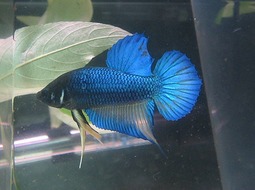
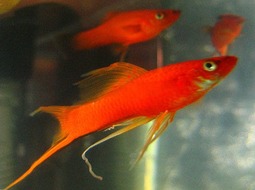
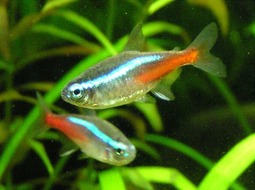


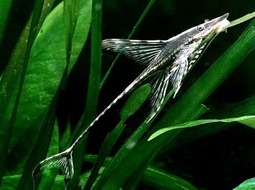

.jpg)

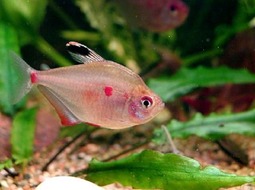




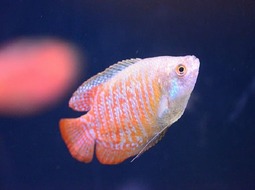

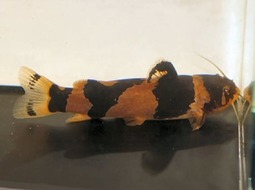
.jpg)


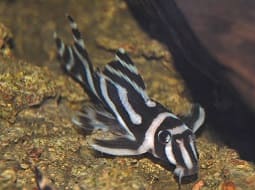
.jpg)




